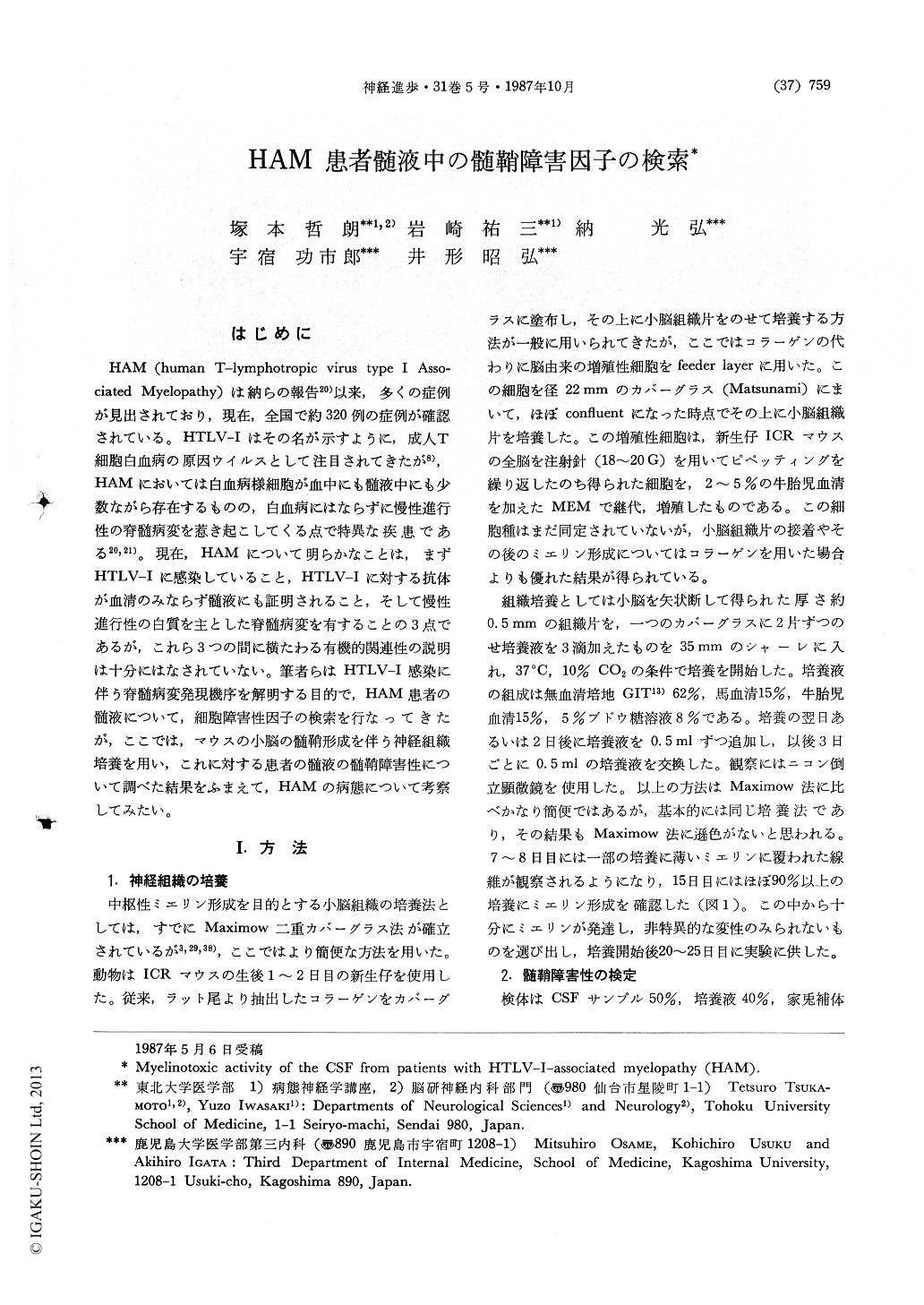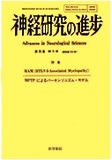Japanese
English
- 有料閲覧
- Abstract 文献概要
- 1ページ目 Look Inside
はじめに
HAM(human T-lymphotropic virus type I Associated Myelopathy)は納らの報告20)以来,多くの症例が見出されており,現在,全国で約320例の症例が確認されている。HTLV-Iはその名が示すように,成人T細胞白血病の原因ウィルスとして注目されてきたが8),HAMにおいては白血病様細胞が血中にも髄液中にも少数ながら存在するものの,白血病にはならずに慢性進行性の脊髄病変を惹き起こしてくる点で特異な疾患である20,21)。現在,HAMについて明らかなことは,まずHTLV-Iに感染していること,HTLV-Iに対する抗体が血清のみならず髄液にも証明されること,そして慢性進行性の白質を主とした脊髄病変を有することの3点であるが,これら3つの間に横たわる有機的関連性の説明は十分にはなされていない。筆者らはHTLV-I感染に伴う脊髄病変発現機序を解明する目的で,HAM患者の髄液について,細胞障害性因子の検索を行なってきたが,ここでは,マウスの小脳の骨鞘形成を伴う神経組織培養を用い,これに対する患者の髄液の髄鞘障害性について調べた結果をふまえて,HAMの病態について考察してみたい。
Myelinotoxic activity of the CSF from patients with HTLV-I associated myelopathy (HAM) was studied with myelinated cultures established from newborn mouse cerebella. Small fragments of cerebellar tissue were plated onto cover slips covered with a monolayer of mouse brain cells as a feeder layer. The cultures were maintained in the medium consisted of 62% medium GIT, 15% horse serum, 15% fetal bovine serum and 8% of a 5% glucose solution. By 15th day, myelinated fibers were observed more than 90% of cultures. The test samples consisted of 50% of CSF, 40% of culture medium and 10% of rabbit complement were applied to the 20-25 days old cultures. Six and 20hrs after the application of test samples, the severity of myelinotoxicity was scored (-) to (++) under an inverted microscope. Myelinotoxicity (+or++) was found in 19 out of 30 samples or 15 out of 20 of HAM patients and it was detected in 3 out of 16 control cases. Positive control cases included a case of SSPE, a patient with Crow-Fukase syndrome and a patient with psychiatric disorders. Strong myelinotoxicity (++), however, was seen in only one of 16 controls in contrast to 11 positive cases out of 20 HAM patients. The results were suggestive of the presence of a certain myelinotoxic factor(s) in the CSF of the patients with HAM. The nature of this myelinotoxic factor is now under investigation.

Copyright © 1987, Igaku-Shoin Ltd. All rights reserved.


